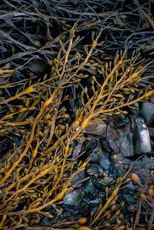
Processing Your Payment
Please do not leave this page until complete. This can take a few moments.
- News
-
Editions
-
- Lists
-
Viewpoints
-
Our Events
-
Event Info
- Women's Leadership Forum 2025
- On the Road with Mainebiz in Bethel
- Health Care Forum 2025
- On The Road with Mainebiz in Greenville
- On The Road with Mainebiz in Waterville
- Small Business Forum 2025
- Outstanding Women in Business Reception 2025
- On The Road with Mainebiz in Bath
- 60 Ideas in 60 Minutes Portland 2025
- 40 Under 40 Awards Reception 2025
- On The Road with Mainebiz in Lewiston / Auburn
- 60 Ideas in 60 Minutes Bangor 2025
Award Honorees
- 2025 Business Leaders of the Year
- 2024 Women to Watch Honorees
- 2024 Business Leaders of the Year
- 2023 NextUp: 40 Under 40 Honorees
- 2023 Women to Watch Honorees
- 2023 Business Leaders of the Year
- 2022 NextUp: 40 Under 40 Honorees
- 2022 Women to Watch Honorees
- 2022 Business Leaders of the Year
-
-
Calendar
-
Biz Marketplace
- News
-
Editions
View Digital Editions
Biweekly Issues
- April 21, 2025 Edition
- April 7, 2025
- March 24, 2025
- March 10, 2025
- Feb. 24, 2025
- Feb. 10, 2025
- + More
Special Editions
- Lists
- Viewpoints
-
Our Events
Event Info
- View all Events
- Women's Leadership Forum 2025
- On the Road with Mainebiz in Bethel
- Health Care Forum 2025
- On The Road with Mainebiz in Greenville
- On The Road with Mainebiz in Waterville
- + More
Award Honorees
- 2025 Business Leaders of the Year
- 2024 Women to Watch Honorees
- 2024 Business Leaders of the Year
- 2023 NextUp: 40 Under 40 Honorees
- 2023 Women to Watch Honorees
- 2023 Business Leaders of the Year
- + More
- 2022 NextUp: 40 Under 40 Honorees
- 2022 Women to Watch Honorees
- 2022 Business Leaders of the Year
- Nomination Forms
- Calendar
- Biz Marketplace
Maine rockweed a growing business, triples growth
 Courtesy / UMaine
A study says that, while the commercial harvest of rockweed has more than tripled over the past 20 years, harvesting had less impact than previous studies indicated.
Courtesy / UMaine
A study says that, while the commercial harvest of rockweed has more than tripled over the past 20 years, harvesting had less impact than previous studies indicated.
Maine’s commercial harvest of rockweed has more than tripled over the past 20 years, but a new study led by the University of Maine says harvesting has a smaller impact than previously thought, with entire rockweed beds recovering.
The Maine Department of Marine Resources reported that preliminary numbers show that, in 2021, 15.1 million pounds of rockweed were landed with a value of $965,481. Twenty years earlier, landings were 4.7 million pounds and had a value of $84,000. Processed rockweed has a much higher value. The most recent published value is from a 2010 Maine Sea Grant fact sheet, which estimated processed rockweed's value was $20 million.
It has a range of commercial uses. In its raw form it is used as packing material for lobsters and garden fertilizer. In its processed form, it is used for nutritional additives for pet and livestock feed and as a thickening agent in food, cosmetics and some paints.
But rockweed harvesting has been the subject of dispute between the industry and landowners. Landowners have worried that rockweed harvesting destroys shoreline habitat.
The recent study by UMaine seems to offer evidence of rockweed's speedy recovery pace. The study looked at 38 sites from Harpswell to Cobscook Bay. According to the study by the Maine Department of Marine Resources, rockweed, which averages in length between 20 and 30 inches, grows back following harvest.
Rockweed recovery
The brown algae is found along the New England coast on hard surfaces such as rocks and dock pilings.
UMaine ecologist Amanda Klemmer and her collaborators examined the impact of harvesting over whole beds in Maine waters to mirror the scale that commercial harvesters and animals interact with rockweed. Previous studies in the U.S. and Canada examined the impact at smaller scales or without control sites.
According to the Maine Seaweed Council, rockweed is harvested using boats fitted with a cutting head set to a height designed to leave the root in place.

The team documented the biomass and height of rockweed in 100-meter-long swaths before commercial harvest and one year following harvest. The study found that harvest patterns were uneven, creating a mosaic of habitats across the bed. The team concluded that harvesting had less impact than previous studies indicated and showed that rockweed biomass fully recovered one year after harvest but the height remained lower where harvest occurred. The team also found that sites with more intensive harvest were less likely to fully recover biomass and height in that time.
“These results suggest to me two bottom lines: first that harvesters exploit beds patchily, like individuals walking haphazardly with weed whackers,” Chris Petersen, who holds the Emily and Mitchell Rales Chair in Ecology at the College of the Atlantic, said in a news release. “This dilutes the effects of harvest for the overall rockweed bed.
"Second, recovery of algal biomass post-harvest is faster than it is for algal height. This result has been shown before, but the speed of biomass recovery here is quite remarkable.”
Petersen concluded: “The harvest impacts on this foundational species appear less than I believe many would have predicted.”
Klemmer studies food webs on Maine’s coastline, and her team drew from the broad knowledge base of the harvest industry, conservation groups, state and federal agencies, and public interest groups to inform the study’s design.
They worked with over 80 landowners and eight harvesters for the study.
The study was published in the Journal of Experimental Marine Biology and Ecology. The research was funded by Maine Sea Grant, the Maine Department of Inland Fisheries and Wildlife and the USDA National Institute of Food and Agriculture.














0 Comments